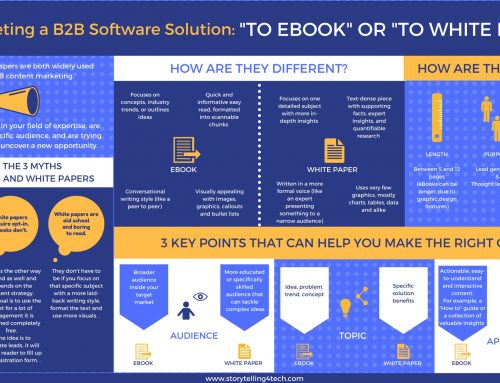Earlier this year I was supposed to write several case studies for a growing software company that wanted to enhance their digital marketing efforts with the necessary social proof.
Case studies or customer stories are generally among the top B2B marketing tactics, used by 82 percent of marketers according to Content Marketing Institute. The value of a good customer story in obtaining credibility and differentiation on the target market goes without saying.
However, the production of case studies is often stressful and hard, which is exactly what my client experienced.
Namely, their customers (that had significant results with the solution, and that could provide a roaring social proof) hesitated to participate in customer stories for months. The case study project was delayed, and the plan was not moving forward.
After many attempts to get them to talk, most of my client’s customers finally decided to turn down the offer and refused to give consent. Some of them said they were too busy, while others did not want to talk about their initial challenges and ROI figures.
As a result, my client had to change its planned content strategy and start all over again with new digital assets.
There are numerous reasons why clients wouldn’t want to participate in your published case study, and these are the most common:
1. They consider their supply chain to be part of their competitive advantage.
2. They may be controlling about their public image, and they don’t want “loose cannon” third parties using their name to get famous.
3. They fear that a case contains commercially sensitive data, particularly figures used to calculate increases in sales or profits generated by the activity in question.
To tackle those objections, you must be prepared to answer all possible concerns and reassure your clients by providing safer or alternative options.
Here are nine ideas that may help you get the approvals required for writing a case study:
1. Talk to the right level – address the people with the power to make the decisions at your client’s company.
2. Look for customers where you had a significant impact on their business, particularly in revenue, profitability, or in opening up a new market opportunity.
3. Position the case study as a win-win project that will benefit both companies. Do not approach as if you are asking for a favor!
4. Offer a public promotion or a story that your client can use to champion his or her efforts internally. Also, offer to distribute it in publications or blogs that reach its customer base.
5. Align your story with your client’s goals. Customer case studies are a fantastic opportunity for third-party validation, both for you and for your client.
6. Offer a reference or a testimonial for their content marketing needs.
7. Convince them it will take little time or effort on their end – just one interview and a chance to review, edit and approve the written draft.
8. Highlight the fact that they are your valued customers – praise your business relationship through this customer story.
9. Put it in your contract and offer a discount – for a future reference, think about putting a requirement for a case study in the contract. Or, better yet, offer the customer a discount on some element of the deal if they approve a case study and serve as an active reference client.
The main thing in ensuring client’s approval is to make them feel safe, valued and to give them a reason why should they be a part of your content marketing strategy.
Translated that means that if you want to get your foot in the door provide the “What’s In It For Me” aspect. Even though a particular case study is used for your company’s promotion be smart enough to include your customer benefits too and you just might get a “Yes.”
Once you do get that approval, I invite you to check my eBook on asking the right questions and writing engaging case studies: “Sell More Software With Customer Stories” (a writing template is included!)
What were your challenges and wins in the case studies creation process? I’d love to hear about them in the comment section.





